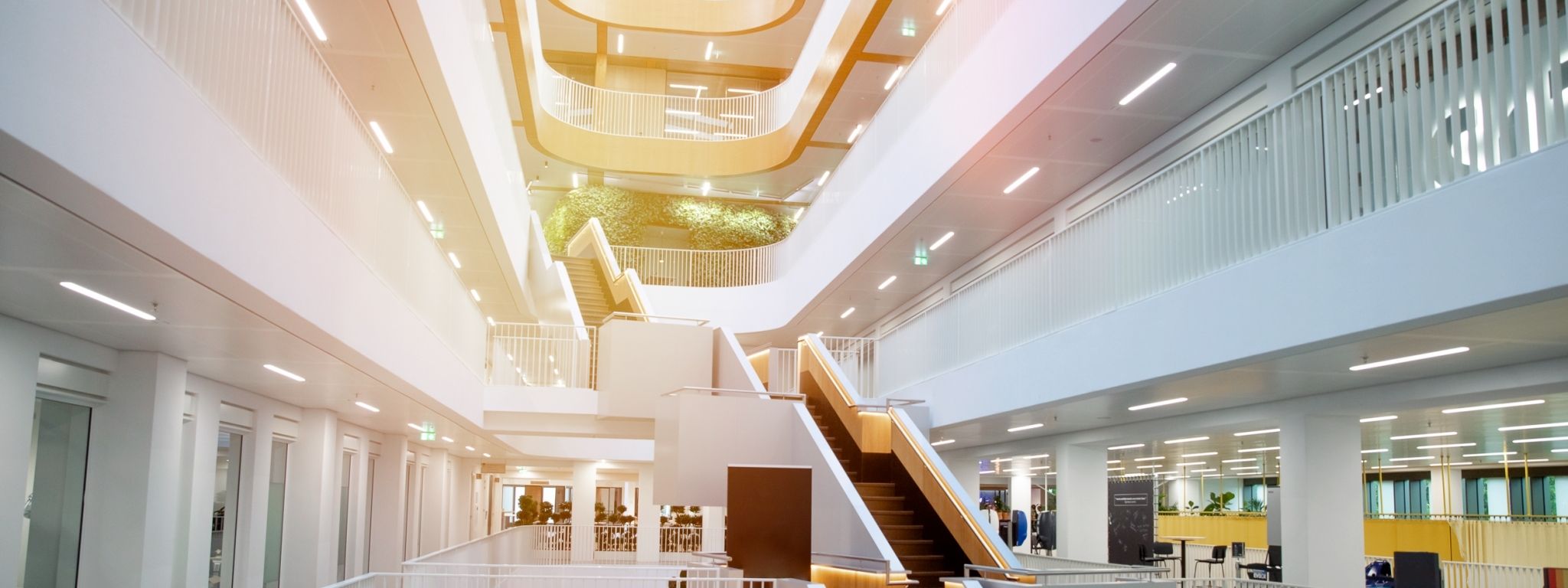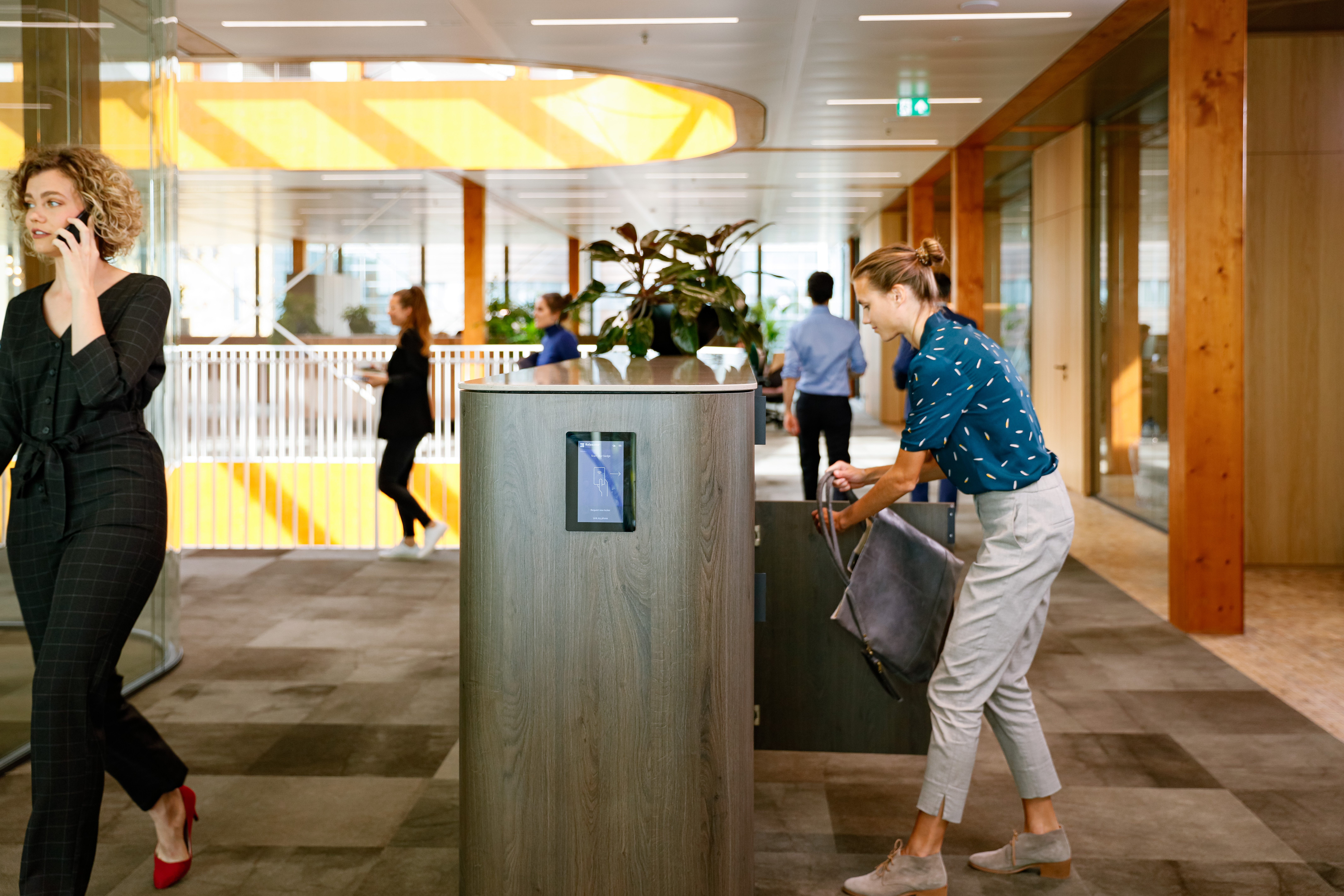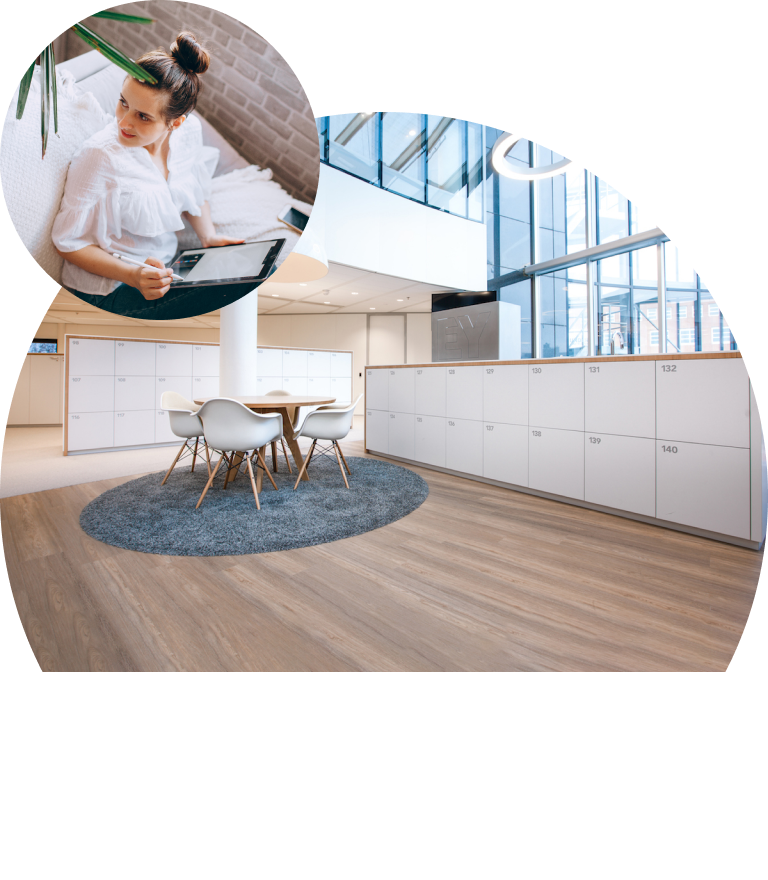We’re seeing a huge transformation in the world of work and the workplace. The ‘daily commute’, ‘9-5 workday’, and time spent ‘chained to a static desk’, all seem outdated. The new normal? Working from home, hybrid work, dynamic offices and the growing remote workforce – all connected via smart technology. In this new world, time spent at the office is being used differently. It’s less about solo or menial tasks, and more about connecting, collaborating and ideating with colleagues. To attract and retain top talent, companies need to create a frictionless, flexible and dynamic workplace experience.
Invest in talented people to drive business growth
Whether a company becomes super-successful or struggles to scale or remain relevant over time, is all about its people. McKinsey says, “Superior talent is up to eight times more productive”. So, talent is clearly the key factor in a successful business. It’s the fuel that drives a business forward and is a catalyst for growth.
The problem is that top talent is hard to come by. And, if you want to keep top talent, you must make it both easy and rewarding for them to work for you. A recent study by Deloitte found that one in three millennials say that a workplace’s physical environment is as important to them as the job itself.
That’s why it’s so important to create a dynamic workplace where employees are inspired and supported to do great work.
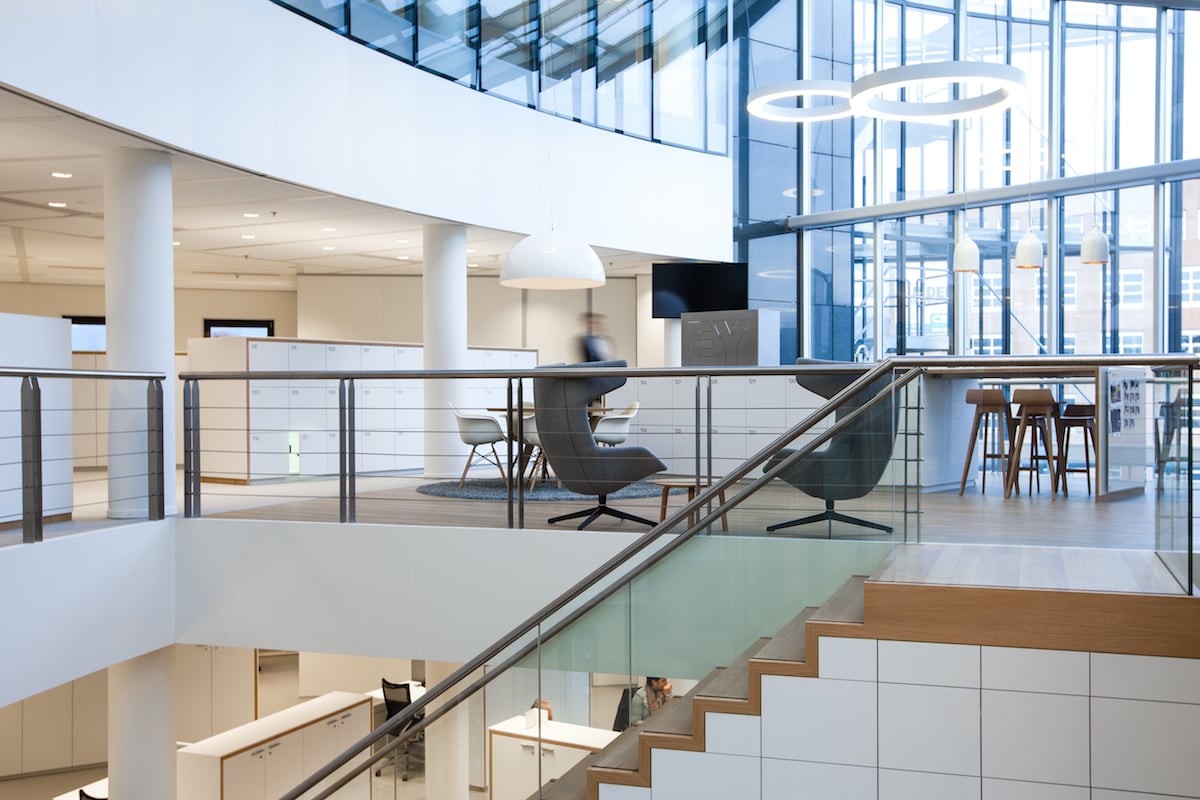
Here are 5 Top Tips and a clear action plan on how to do it!
Tip 1: Use the ‘attraction’ factor of an awesome office
We’ve all seen and admired world-leading dynamic, smart, and sustainable offices. Two great examples, if you’re looking to be inspired, are CBA’s Australian HQ (Australia’s No. 1 workplace, Leesman) and Deloitte’s Amsterdam HQ, The Edge (the most sustainable building in the world). These offices might be on opposite sides of the globe, but they have a few things in common:
- State-of-the-art design – they deliver a clear “wow”
- Open collaborative workplaces – they easily support flexible and hybrid workstyles
- More than an office – think wellness, cafes, social hubs
- Technology-forward – workplace apps and IoT make facilities self-serve & easy-touse for hybrid employees
It is expected that in 10-15 years, there will be more remote than on-premise staff. This is a huge shift and technology developments are the big enabler.
Tip 2: Meet your employees ‘office technology’ expectations
Best-in-class dynamic offices put technology at the heart of the strategy. They understand that employees are also consumers, and that consumers expectations are high. The merging of digital and IRL touchpoints, and the ‘immediacy’ trend in consumer goods, has led to the explosion of on-demand products. In the home: Nespresso brews delicious single-serve coffee, Google adjusts the room temperature, Amazon delivers same-day shopping and Sonos sets the right musical mood.
People are now really used to intuitive flows and frictionless experiences, typically enabled, supported and optimized by technology. Shining the spotlight back to the office, successful dynamic workplaces use technology in much the same way. The rise of workplace apps, desk booking systems, smart storage (amongst others), optimize workplace facilities and the employee experience. And the really great thing, is that facilities become self-serve, on-demand and personalized to the needs of the user. What’s not to love about that.
Tip 3: Make employee ‘workplace wellness’ your top priority
Smart dynamic workplaces, are more than just nice-looking buildings with good coffee, a ping-pong table and a cool workplace app. It's about the design of the workplace that allows for the optimal circumstances for people to work freely and flexibly.
Flexibility in the workplace is different for everyone and it is very difficult to have one set definition that works for all. But the key to a successful dynamic workplace strategy is to ensure that flexibility is tailored to an organization’s people, and they have the option to choose what is essential to them.
‘’58% of millennials would choose a better quality of life at work over a higher salary.”
Up until a few years ago, salary was the ultimate decision-maker in the career ladder. But salary is no longer the top priority when it comes to attracting or retaining employees. The remote job market is currently buoyant and job seekers are feeling empowered to choose jobs that are more compatible with their lives. In today’s world, work-life balance and quality of life at work, are hugely important. This is why we’re seeing flexible, dynamic workplaces top the charts of employee benefits.
Read More: Your Guide to Successfully Transition into a Dynamic Workplace
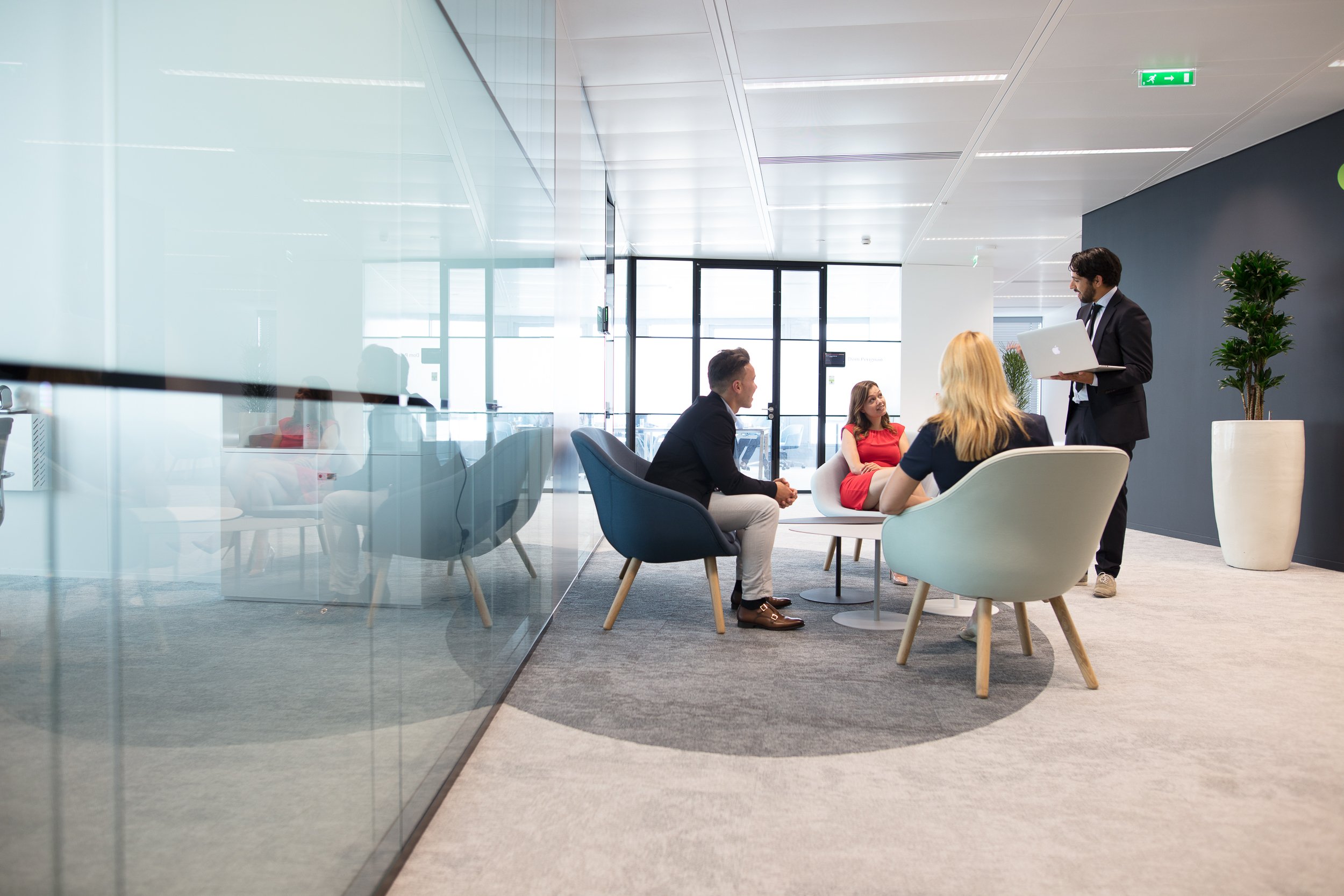
Tip 4: Ace the communication around change management
Increased hybrid and remote work policies open up organizations to a much bigger talent pool, spread far wider from dynamic workplace ‘hubs’. This is great for talent acquisition, but not always so great for effective internal communication.
If an organization is introducing new systems or technology to support dynamic work, they need to put just as much energy into how it is communicated. It’s often about nudging behavioural change, switching people’s mindsets, adopting clear and regular communication, and – you guessed it - expectation management.
Managing and improving a flexible dynamic workspace is often an adaptive and iterative process, that is designed to respond to changing needs or employee input and feedback. One of the biggest pitfalls is taking a “we do it once, it’s done, then we sit back and relax” mentality!
It’s all about monitoring and data management on the one-hand, powered by the technology (big data). Alongside old-school focus groups and feedback loops, on the other hand, to bring more qualitative insight to the table. A smart locker system can spot the opportunity to provide more storage in unexpectedly high-use breakout spaces. But technology cannot always say “hey, I’m really fed up that people are not respecting our clean desk policy and leaving a mess behind!”
Tip 5: Take inspiration from dynamic work frontrunners
Front-runners like Microsoft, Capgemini, Deloitte, PwC, Nike and Accenture, have already recognized the need for greater workplace flexibility. They are well ahead in the rethinking and redesigning of traditional offices in favor of flexible and dynamic workplaces.
Read More: What Marc Zuili, CIO, Deloitte France has to say about flexible working and dynamic offices
It’s a fact that employees that get to choose their location and work hours have a better balance between work and life. This healthy relationship with work, in turn, improves productivity and loyalty towards the employer. It puts people in control of their work and positively influences employee wellbeing. To attract the most talented employees, businesses are in the race to offer a technologically advanced, highly flexible and healthy work environment.
According to a study by Deloitte, when employee engagement increases, there is a corresponding increase in employee retention by up to 87%.
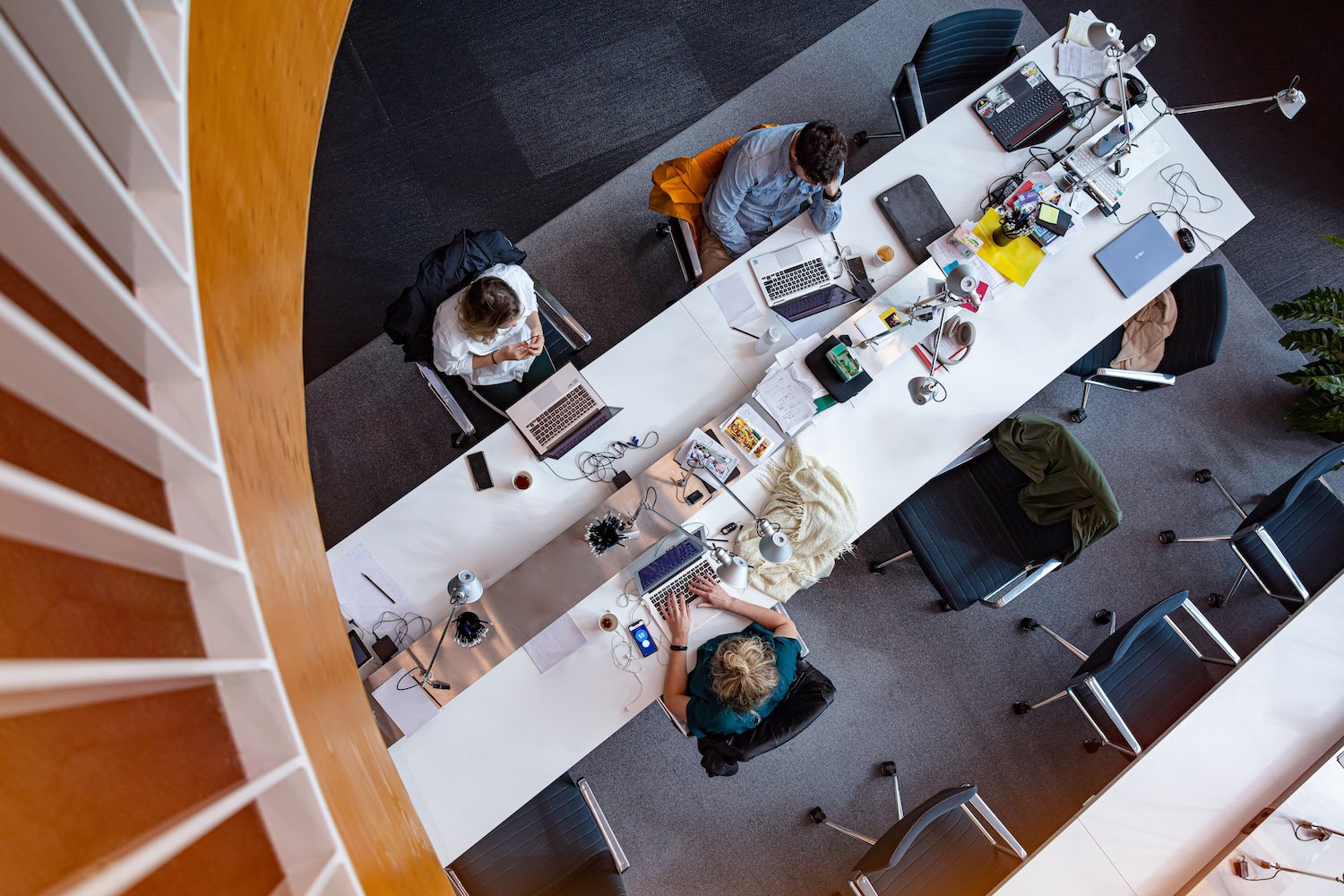
Going dynamic? Here’s your people-first action plan! Now let’s go into the real action plan. Here’s a checklist of fundamental things that can help teams with the development of an emerging dynamic workplace strategy, or the refinement of an existing one.
The goal of these ideas is to create a ‘human-centric’ space that helps to attract and retain great people, as part of broader ‘company culture’ and ‘employee wellness & productivity initiatives.
1. We do not all work in the same way, one size does not fit all – let’s be more flexible.
Look for solutions that have the in-built capacity to flex to different needs, monitor actual use, and easily adapt and improve – employees will be more satisfied and more productive too.
2. If the 9-5 is ‘out’ then static desks and pedestals might be too – not everyone will be happy!
Moving to partial or total flexible seating is a core part of the dynamic office. But not everyone adapts easily, straight away. Employees can be frustrated about manual desk booking procedures and miss the comfort and security of a desk. Solutions like smart desk booking tools and smart, allocated storage space can really help them to adjust and feel ‘more at home’ again. For dynamic work high-flyers, dynamic storage is also a core expectation.
3. Don’t ignore or underestimate the complex logistics
Going dynamic, and doing it well, is not a magical enterprise. It takes old-fashioned effort, and the logistics are complex. Asking the basic questions is a good start: where will people put their personal & work stuff, how will they reserve a desk, how will we know where they are each day, how many meeting spaces and lockers do we actually need? It’s good to be thoughtful about these things in advance. It can be really damaging to work culture, employee morale, satisfaction, engagement, productivity - and therefore retention - if people have a negative experience in the dynamic office environment.
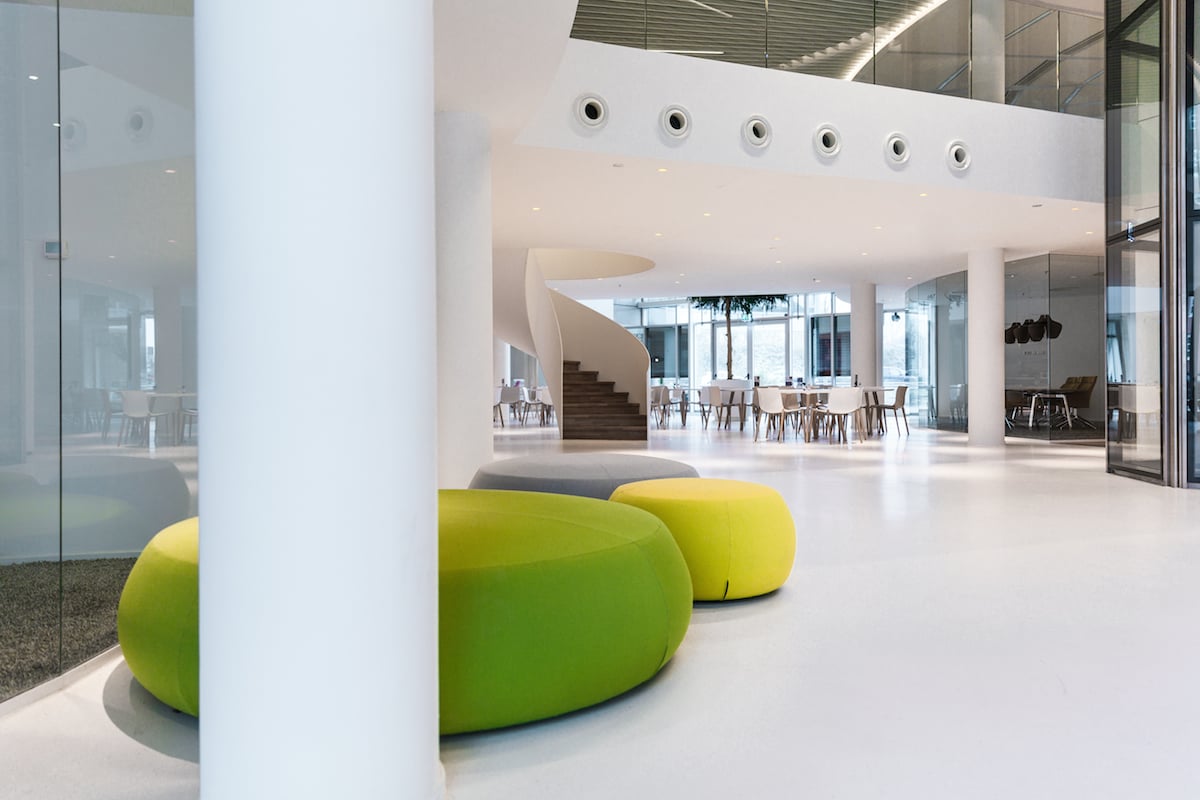
4. Accessibility and inclusive design should be central, not ‘add-ons or afterthoughts’
Advancing workplace diversity and inclusion is more important today than ever before. Many employees will actively review policies, judge performance and be vocal if they spot gaps. One neat example is Microsoft’s Redmond reception desk. It has two surface levels: one for people arriving on foot and another for those arriving using a wheelchair. Technology can also play a big role, with its capacity to tailor services to individual needs.
5. Think outside the box – work areas are not confined to desks and meeting rooms
Utilizing the ‘entire office’, makes better use of resources, and frees people up to work more flexibly too. It’s about supporting more varied team interactions, which is important with the rise of hybrid. Support different styles of meeting - a relaxed chat on a sofa, a communal table brainstorm, a quick call from the chairs in the lift lobby, or a spontaneous project catch-up in the café space post-lunch. These ideas all make better use of valuable real estate and provide a more flexible working environment for people.
6. Create more social spaces that help people to connect
When people spend less time in the office with their colleagues, it can be hard for even the strongest of company cultures to thrive. Dynamic workplaces help with this, as the space freed up by removing static desks and large meeting rooms, can be reimagined to encourage ‘social’ work moments and connections, both for vertical teams and cross-function interactions.
It’s a win-win: what’s good for employees, is good for the business. In today's world, where the workforce is more mobile than ever, the ability to attract and retain talent is even more important. Opting for a smart dynamic workplace can help organizations to create better employee experiences, improve collaboration and innovation, support staff retention - and at the same time optimize space and lower operational costs.
At the end of the day, this is all better for both the business and for the talented employees.
Curious to read more?...
Learn more about hybrid working and how to transform your workplace into one from one of your most-read articles: What is Hybrid Working and how to transform your workplace?
If you are looking for more details on transforming your office into a dynamic workplace, book an introduction call with our experts now.

